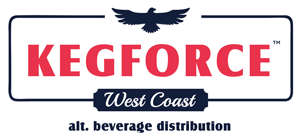Reducing the Carbon Footprint of Single-Cup Coffee Distribution
Many people in the United States are looking for ways to protect the environment and reduce landfill waste. Nearly three-quarters of millennials worldwide say that they would pay more for sustainable and ethically sourced products.

One of the most common places activists and laypeople alike have turned to cut down on waste is in our kitchens and at our tables. The usage of single-use coffee cups is detrimental to the health of the planet. The trash created by breakrooms, cafes, and car dealership lobbies adds up to a staggering amount of unrecyclable mass in landfills. Americans in particular use over 100 billion disposable cups annually.
This extreme usage of consumable goods has disastrous consequences for the environment. Coffee pods, cups of coffee, coffee stirrers, coffee filters, and straws for cold coffee add up to mountains of refuse in landfills.
K-Cups and Coffee Pods
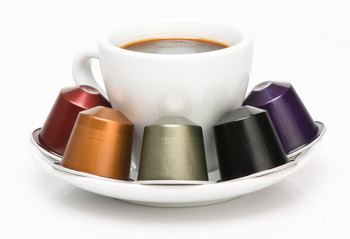 K-Cups and coffee pods have been popular methods of brewing a single cup of coffee for over two decades. Coffee pods are now manufactured by many brands beyond Keurig, including popular coffee shop brands, hot chocolate manufacturers, and even soup brands. These little pods are cute, fun ways for every member of a household or workplace to brew a single cup to their individual preference. However, their popularity is causing major devastation to the volume of noncompostable material in landfills, the shortage of trees and petroleum, and the clean water crisis.
K-Cups and coffee pods have been popular methods of brewing a single cup of coffee for over two decades. Coffee pods are now manufactured by many brands beyond Keurig, including popular coffee shop brands, hot chocolate manufacturers, and even soup brands. These little pods are cute, fun ways for every member of a household or workplace to brew a single cup to their individual preference. However, their popularity is causing major devastation to the volume of noncompostable material in landfills, the shortage of trees and petroleum, and the clean water crisis.
Production of Coffee Pods
The production of coffee pods is enormously expensive from both a financial and an ecological standpoint. It requires huge volumes of water, plastic, and metals to create a single coffee pod.
Packaging of Pods
Individual packets of single-use products are known to be ecologically hostile. With products like K-cups and coffee pods, those costs are sky-high. Each pod contains plastic, a minute amount of coffee grounds, and aluminum for the lid. These packaging intense units are then packed in their boxes and containers destined to be discarded. Once packaged, even more pollution and waste are created by transporting them internationally and across the country.
Landfill Waste
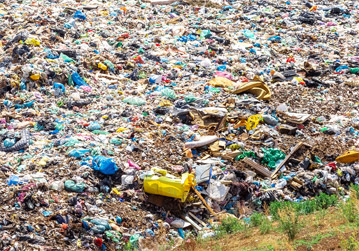 Once they are thrown away, very little will be happening to those coffee pods for the next few centuries. Experts believe that K-cups and similar coffee pods will need up to 500 years to decompose in a landfill.
Once they are thrown away, very little will be happening to those coffee pods for the next few centuries. Experts believe that K-cups and similar coffee pods will need up to 500 years to decompose in a landfill.
Issues with Recycling Coffee Pods
Many people believe that K-cups are recyclable as-is. Not only is this not true, but even coffee pods marketed as recyclable are not always what they seem. The aluminum lid for all coffee pods is not recyclable and will end up in a landfill no matter what. Standard K-cups are not recyclable or compostable, as they are made of an alloy of aluminum and plastic. Coffee pods that are marketed as recyclable require removing all of the components of the pod that are not recyclable, including the lid and the grounds, before recycling the pods. This makes busy workers very unlikely to recycle those coffee pods, and they also end up in a landfill.
Problems With Paper Coffee Cups
Paper coffee cups are a ubiquitous feature of American life. They seem like an innocuous good at every water cooler and coffee pot. However, the sheer consumption of this small disposable drinkware makes them a dangerous vice that Americans need liberation from expeditiously.
Most Paper Cups are Not Recyclable
 Paper is the epitome of recyclables. Not all plastics can be recycled, cardboard is a tossup, and metals often need specialized facilities. However, even though paper is almost always recyclable, the compounds added to paper can make it unfit for recycling centers and lead to the paper ending up in a landfill.
Paper is the epitome of recyclables. Not all plastics can be recycled, cardboard is a tossup, and metals often need specialized facilities. However, even though paper is almost always recyclable, the compounds added to paper can make it unfit for recycling centers and lead to the paper ending up in a landfill.
Paper cups are lined in a thin layer of plastic. This plastic, polyethylene, acts as a moisture barrier. Paper on its own has no chance against the heat and moisture of a cup of hot coffee. Once that plastic is attached to the surface of the paper cup, removing it is expensive and usually not deemed worthwhile by recyclers. Even though paper cups are often touted as being better for the environment, they tend to end up in a landfill with a non-compostable plastic layer.
Production of Paper Cups
Creating paper cups in the first place is an intensive process with negative effects on the environment.
The creation of paper in the first place tends to start with deforestation. Trees that took decades to grow are harvested, leaving natural lands devastated by the loss of crucial members of the ecological web. Those trees are then transported via petroleum-powered machines to mills.
These mills, also operating off of petroleum, created staggering volumes of wastewater in the process of creating paper. The final product then also needs to be made, usually at another facility, before being shipped around the world. Each step of this process creates massive emissions and waste, only for the final product to be disposed of after twenty minutes of use.
Manufacturing a single cup runs up a steep bill for the planet. When one is thrown away, so also is discarded 33 grams of wood, 4 grams of petroleum, half a pound of carbon dioxide, and nearly a gallon of water.
Usage of Plastic for Paper Coffee Cup Lids
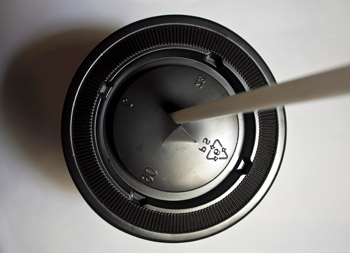 Not only are paper coffee cups detrimental to the environment, but they are also often paired with plastic lids. These lids only contribute to the issue. These lids are number 5 plastic, also known as polypropylene. Number 5 is not recycled by standard recycling services. Recyclable alternatives still tend to make it to the landfill, with less than a third of the lids recycled.
Not only are paper coffee cups detrimental to the environment, but they are also often paired with plastic lids. These lids only contribute to the issue. These lids are number 5 plastic, also known as polypropylene. Number 5 is not recycled by standard recycling services. Recyclable alternatives still tend to make it to the landfill, with less than a third of the lids recycled.
Straws & Stirrers
Cold drinks need straws, and hot beverages need stirrers. For most workplaces, this adds to what is already ending up in the landfill. Major brands like Starbucks have changed their lids, attempting to limit the use of straws. Their innovation has drawn incredible criticism as the new lids use even more plastic, almost a gram more per lid. Many other initiatives to limit straw use have run into similar pitfalls where there are minuscule reductions in ecological damage.
Problems with Styrofoam Coffee Cups
 Polystyrene foam, referred to under the brand name Styrofoam, is another popular option for coffee drinkers. Great at heat retention, it makes the cup of coffee last that much longer.
Polystyrene foam, referred to under the brand name Styrofoam, is another popular option for coffee drinkers. Great at heat retention, it makes the cup of coffee last that much longer.
Unfortunately, while it is possible to recycle Styrofoam, it is an arduous and expensive process. This expense means that most polystyrene foam winds up in a landfill. Once in that landfill, experts believe it will take over five centuries to decompose. Styrofoam cups are even worse for the environment than their paper counterparts.
Problems with Nitro Bottles
How is nitro coffee made? It's made by injecting nitrogen gas into cold brew coffee. This process creates a delicious and smooth alternative to brewed coffee. Nitro coffee is much more ecologically sustainable. Commercially, nitro coffee is available for purchase in glass bottles. These bottles hold about ten servings. Many ecologically minded individuals try to consume coffee sustainably by purchasing nitro coffee in glass bottles. However, less than a third of that glass ever gets recycled.
Like many other features of working from an ecologically sound perspective, communal options are almost always better solutions than choices made by individuals.

Kegged Beverages For Environmentally Safe Beverage Delivery
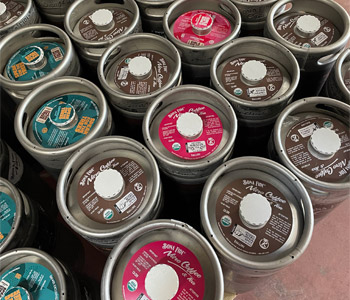 Kegged beverages are a great way to include sustainable options at your workplace. In five-gallon increments, a keg can replace 55 cups of coffee. For every two tanks, more than a hundred single-use items stay out of the landfill. Offices are also a giant source of the demand for single-use products like coffee cups and pods.
Kegged beverages are a great way to include sustainable options at your workplace. In five-gallon increments, a keg can replace 55 cups of coffee. For every two tanks, more than a hundred single-use items stay out of the landfill. Offices are also a giant source of the demand for single-use products like coffee cups and pods.
If workplaces can use fewer paper products, it will begin to discourage the aggressive manufacturing of these disposable goods.
Reduce the Use of Single Serve Cups
A reusable resource such as a keg on hand promotes reusable drinkware. Mugs are an excellent option for reusable drinkware, as they are durable and customizable. Having employees personalize mugs can make them more likely to want to use sustainable drinkware.
Reduce the Use of K-Cups and Pods
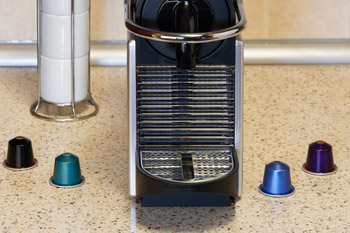 Kegs contain large batches of coffee meant to serve many people or a handful of people several times over. A coffee pod is for single use. One gallon of coffee produces anywhere from 10-15 mugs of coffee. A five-gallon keg can make up to 75 cups of coffee, meaning 75 fewer coffee pods in a landfill.
Kegs contain large batches of coffee meant to serve many people or a handful of people several times over. A coffee pod is for single use. One gallon of coffee produces anywhere from 10-15 mugs of coffee. A five-gallon keg can make up to 75 cups of coffee, meaning 75 fewer coffee pods in a landfill.
Reusable for 25 to 30+ Years
Once a single keg has been emptied, it is not yet time for the vessel to meet its unmaker. Once empty at a work site, you can swap the tank for a full one, and that original keg can be cleaned and refilled. The lifespan of a standard stainless steel keg can range from 15 to 30 years. This reusability makes it a much more ecologically sound option than single-use alternatives.
Stainless Steel is Recyclable After the Lifespan of the Keg
When compared to single-use options, stainless steel kegs are enormously efficient. The usage of steel kegs can reduce the number of greenhouse gasses in the atmosphere by over 400,000 metric tons. In addition, they cut down the amount of packaging in landfills by over 500,000 tons. Kegs are not eternal vessels, but they still have upsides in compassion to shorter-lived options. Once a keg’s lifespan has reached its end, its stainless steel is recyclable.
Variety
The most apparent appeal of coffee pods is that they allow individuals to enjoy the flavored drink of their choice, rather than an entire workplace having to share a single, unassuming style of coffee. There are not only kegs of various strains of nitro coffee but also beverages like kombucha. This allows for variations through the months that might appeal to employees with an adventurous side.
Sustainable Coffee Distribution Reduces Waste
 Coffee and hot beverages are an integral part of the American lifestyle. A cup of coffee might seem small, but our current system has a significant impact on the morale of the worker and on the welfare of the planet.
Coffee and hot beverages are an integral part of the American lifestyle. A cup of coffee might seem small, but our current system has a significant impact on the morale of the worker and on the welfare of the planet.
Single-serving coffee pods require a ton of nonrenewable resources to produce, package, and transport, only to immediately land in a landfill upon their singular use. Coffee cups and their plastic lids are unrecyclable and unsustainable options. Straws, stirrers, filters, and other accouterments of the usual coffee experience all pile up in landfills. Styrofoam and glass coffee vessels alike fail to get recycled and become more discarded goods.
Environmental Protection and Reducing the Carbon Footprint Of Businesses
 Climate change stares us down from all fronts. As the seas rise, as inflation drives prices sky high, as summers warm and winter storms brew, it becomes clear that efforts need to be made immediately to curtail the effects of climate change.
Climate change stares us down from all fronts. As the seas rise, as inflation drives prices sky high, as summers warm and winter storms brew, it becomes clear that efforts need to be made immediately to curtail the effects of climate change.
There are dozens of avenues available to us to begin changing our behaviors as a society and a culture. Some of the most heinous offenders of waste and pollution are no more than arms’ reach away.
One such commodity that’s been prevalent in the media lately is a daily staple for many Americans. United States citizens are slowly coming to terms with the idea of landfills full to bursting with single-use coffee cups and coffee pods, but what are the alternatives?
Using kegs of coffee sourced locally creates an enormous reduction in pollution. Transportation of the coffee plummets. If workplaces use mugs, then the use of single-use coffee supplies falls dramatically, if not to zero. Distributing beverages in kegs seriously reduces the carbon footprint of a business. Rather than convince people to give up coffee, continue to supply this highly sought-after resource sustainably. Using kegs massively reduces the number of single-use coffee cups ending up in landfills.
Consider investing in keg-distributed coffee for your workplace today, and eliminate harmful plastic and non-recyclable paper waste.
